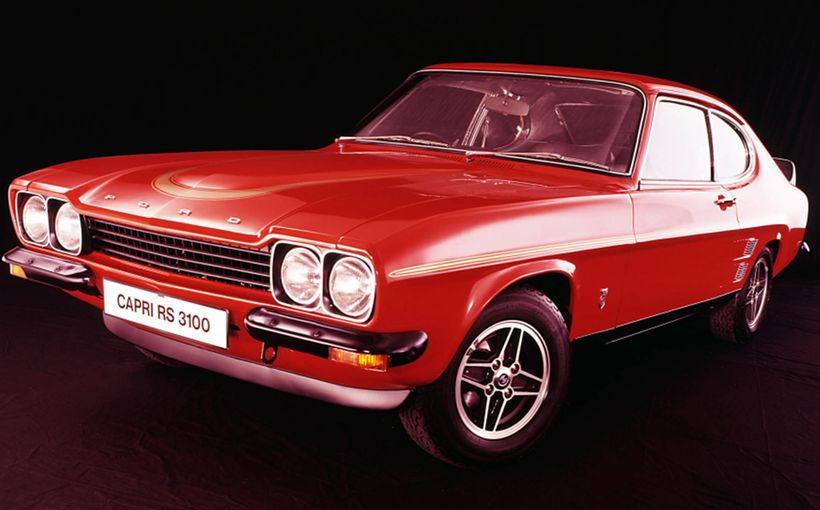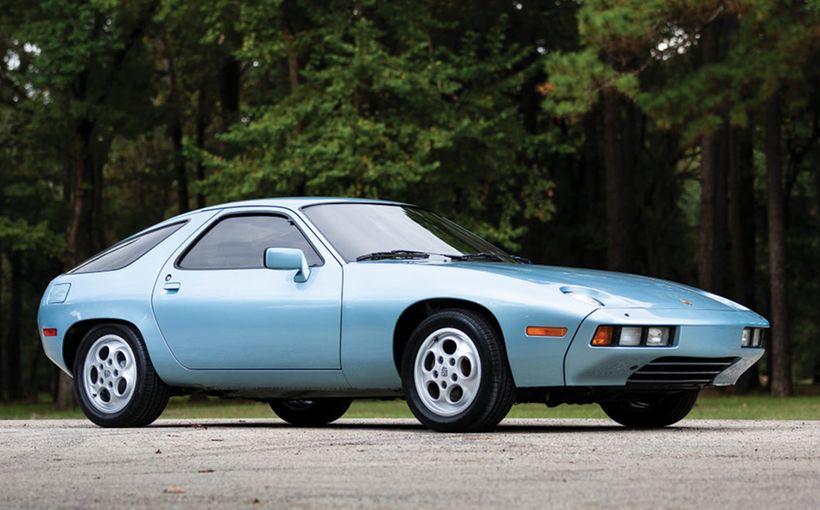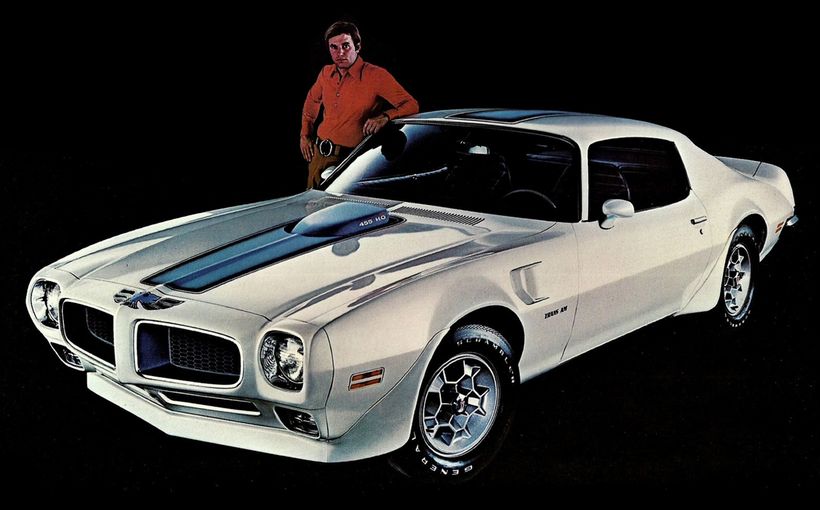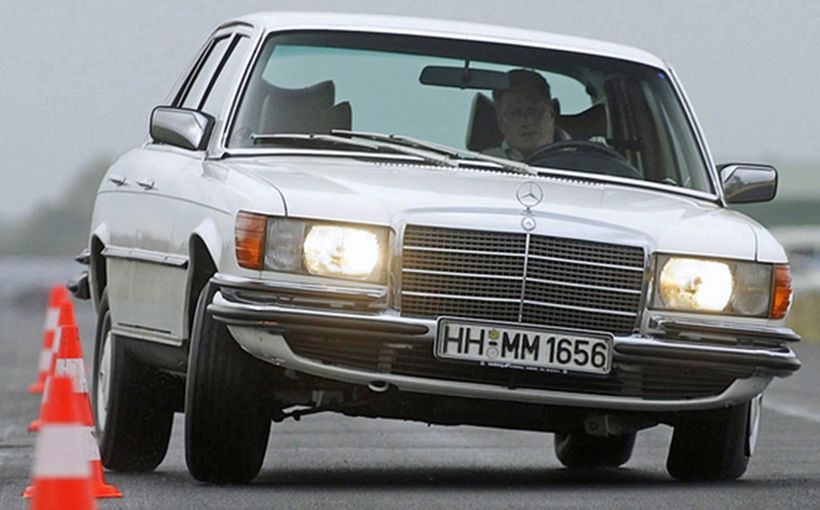Hillman Hunter: To Finish First, First You Must Finish

“Build me a car to come last” was reportedly the famous request made by 1968 London-Sydney Marathon winner Andrew Cowan to Rootes Group competition manager Marcus Chambers, as he sized up the humble Hillman Hunter’s chances in such an epic event. It was the canny Scotsman’s succinct way of saying that only a very solidly-built and low-stressed car could win and he was proved correct, with one of the most famous victories in motor sport history.
The seed for this epic challenge had been planted by the UK’s Daily Express newspaper in London, which wanted to sponsor a huge motoring event to help drag Britain out of its 1960s economic gloom by showcasing the nation’s world-class engineering and organisational abilities to a global audience.
After the Daily Express posted a rich £10,000 first prize, Sir Frank Packer’s Daily Telegraph in Sydney backed the Australian leg. With these two large-circulation daily papers supporting the Marathon at both ends, it created great publicity and attracted entries from all over the world.

Interest was naturally strongest in the UK and Australia. More than 800 entries were lodged, from which only 100 were accepted. British teams represented 57 of those 100 entries, including multi-car factory attacks by Ford and British Leyland. There were also 18 from Australia and serious contenders from several European countries, including Citroen which would play a leading role.
The gruelling 16,000 km distance passed through 10 countries on the first leg from London to Bombay including England, France, Italy, Yugoslavia, Bulgaria, Turkey, Iran, Afghanistan and Pakistan to the Indian coast. After a ship’s journey from Bombay to Fremantle, the second leg was a three-day blast across Australia from Perth to Sydney. Each competitive stage had a maximum allowed time, beyond which competitors’ accumulated penalties based on one point for every minute late.
The Marathon was refreshingly thin on technical rules. Basically you could run any vehicle you wanted, as long as it had four wheels and only two were driven. Vital major components like the body-shell and engine block were tagged, so if you had to change them you were out.
Cowan was mindful that Rootes could only afford to enter one ‘works’ car. So building it strong enough to survive the event was his first priority, with a win only an outside chance given the strength of the competition. After all, to finish first, first you must finish.

Priority One: Survival
Scottish farmer Cowan had been rallying in works-prepared Sunbeam Rapiers, Tigers and Hillman Imps for the Rootes Group (under Chrysler ownership from 1967) in British and European events with increasing success, when the 1968 London to Sydney Marathon was announced.
The only car in the Rootes stable considered suitable was the humble 1.7 litre Hillman Hunter. It featured a very conventional and simple design that was actually an advantage in this context – the less parts there are, the less there are to break.
With its compact 2501mm wheelbase, MacPherson strut front suspension, leaf-spring live rear axle and relatively light 935kg kerb weight, the Hunter would undergo substantial modifications for the Marathon. And what the Rootes crew lacked in spending power they more than made up for with clever and thorough preparation, including different cylinder heads for each leg due to variations in fuel quality and an Aston Martin rear-end.
In an interview with the UK’s Motor Sport magazine, Cowan gave some intriguing insights into how the budget-priced campaign came together, after Rootes’ canny team manager Des O’Dell raised the possibility of Cowan and co-driver Brian Coyle competing in the Marathon.

“Des was convinced we could make a go of it and so was I,” Cowan said. “It was put to the Rootes board and in the end they said, ‘OK, you’ve got £25,000. That’s it.’ So we took a Hunter and we tested it to destruction. We drove it and drove it, on the rough at Bagshot (military tank testing facility), through water, through mud and sand, we did everything we could to break everything that could possibly break. And each time anything broke we didn’t just replace it, we made it stronger. That would then put more strain on something else and as each art broke we redesigned it.
“We thought about how tired we would get: seven days and 7,000 miles (11,200km) flat-out to Bombay, over some really harsh terrain and then three days and 3,000 miles (4,800km) across Australia. I suggested to Des that it would be safer if we could get a fairly light third person who could drive in between the stages. Colin Malkin, British rally champion with an Imp and a fine driver, was the obvious choice. During all the testing, to replicate the weight correctly I carried a passenger, plus two bags of cement in the back to represent Colin.”
With its heavily-braced body and beefed-up suspension, the tank-tough Hunter was powered by the same 1725cc four cylinder engine developed by Holbay Engineering for the sporty Sunbeam Rapier H120. With a modified head, high-lift cam, tuned-length exhaust headers, special distributor and twin Weber 40DCOE carburettors, the H120 engine was rated at 108bhp at 5,200rpm. Not huge power but enough to do the job with – most importantly – reasonable economy and proven durability.

With a shorter-than-standard diff ratio to improve performance in the competitive special stages, the Hunter’s close-ratio four-speed gearbox was equipped with a Laycock de Normanville overdrive unit to allow higher speeds at lower revs to minimise engine wear.
The steel bumpers were removed to reduce weight and Minilite magnesium wheels replaced the standard steel items. The front of the car was protected by a light but strong ‘roo bar’ rigidly braced to the body and covered in strong wire mesh for protection from flying debris. A large metal sump guard and other under-body armour protected vital drivetrain components and extra driving, reversing and spot lights were installed.
Space was at a premium in the boot, as it was filled with three 12-gallon auxiliary fuel tanks plus emergency spare parts and recovery gear including shovels. As a result, a large tool box and up to three spare tyres could be carried on the roof, with their mountings attached to rigid internal bracing to boost turret strength and crew protection in the event of a roll-over. A smaller box was mounted on top of the boot-lid.

Large metal steps were fitted to the rear of the car on each side, aligned with boot lid-mounted grab handles. These were designed to allow Coyle and Malkin to get out and bounce up and down on the rear of the car, to assist the rear tyres in gaining grip if stuck in a muddy bog or deep sand.
The interior was stripped of unnecessary items to save weight and fitted with improved seating, multi-point harnesses, extra gauges to monitor the car’s vital signs and a Halda SpeedPilot for accurate navigation.
Cowan: “Based on the lessons learned, a recce Hunter was built exactly to the specification we were going to use on the rally and Brian and I went over the full route from London to Bombay. After all our testing and modifying it held together, except we broke a (rear axle) half-shaft in Bulgaria.
“We got a passing truck to tow us to the Turkish border, pushed the car over the line and then got tied on the back of another truck that towed us to Istanbul, where Chrysler (as Rootes had now become) had a dealership. We got half-shafts flown out to us and we completed the recce down through Iran, Afghanistan, Pakistan and on to Bombay.

“Then I flew home while Brian flew to Perth and recced the cross-Australia bit with a Chrysler rep in a Valiant. So now we had good notes for the whole route. Meanwhile Des, via one of his old mates at Aston Martin, got hold a pair of (much stronger) DBS back axles and diffs and narrowed them down to Hunter size. All of this was allowed in the regulations.
“The only problem we had was that the fuel in several of those countries was dreadful and we had pinking all the time, burned valves, holed pistons. By Bombay the engine was pretty wrecked. This is where Des O’Dell’s clever thinking came in.
“The actual car for the event was built and I put 3,000 miles on it; a bit of rough stuff at Bagshot, a bit of motorway, a bit of tarmac. Back at the factory the entire car was dismantled and all the bits that came off it – cylinder head, front struts, gearbox, overdrive, back axle, brakes, everything – were packed into boxes and sent off to Bombay.
“Then the car was rebuilt with all-new parts. The cylinder head that went on the car for the first leg was low-compression to deal with the bad fuel and the head that went in the Bombay box was high-compression. In Australia the fuel would be okay and we’d have 20 more bhp than with the low-comp head.”

Of the 98 starters that left London on November 24, only 72 survived the hazardous 11,200km through 10 countries to reach Bombay. Roger Clark and his Swedish co-driver Ove Andersson were the pre-event favourites in their works Cortina-Lotus Mk2 and attacked from the outset with blistering speed to be first to reach the Indian coast.
Behind them were Gilbert Staepelaere’s works Ford Taunus, Lucien Bianchi’s factory-backed Citroen DS21, the works Austin 1800s of Paddy Hopkirk and Rauno Aaltonen – and Cowan’s Hillman Hunter. On December 5 the surviving cars and crews would depart India aboard the SS Chusan for the nine-day voyage to Fremantle.
Cowan: “Colin and I took turns at driving but Brian was navigating all the way and, apart from the occasional doze, he pretty much stayed awake for a week. At Bombay we found we were sixth overall, so only five cars would be running ahead of us once we got to Australia.
“We had just four and a half hours of service time at Bombay before the cars were sealed and loaded onto the ship to Fremantle. Des had flown out all the mechanics our budget could afford and they descended on the car and pulled it to pieces. All the bits waiting in the boxes, suspension, brakes, transmission and that high-compression head, were fitted within the time frame like a high-speed pit-stop. Then we had (nine) days at sea catching up on sleep – although the weather was pretty rough at the end – and we set off from Perth in what was effectively a brand new car.”

On Dec 16 they left Perth for another epic high-speed drive, this time to the other side of Australia in just three days. Only 56 of the original 98 starters would make it to Sydney on December 18.
From the start of the Australian leg Clark and Andersson in their Cortina-Lotus continued to blitz the field, until engine problems in South Australia dropped them down the order and ultimately differential failure in the Victorian high country ended their gallant run.
Meanwhile Cowan had passed the Austin 1800s of Aaltonen and Hopkirk, which had both struck trouble in Western Australia, to move into third place with only Staepelaere’s Taunus and Bianchi’s Citroen ahead of him on points and on the road. However, another of the works Austin 1800s with the all-Aussie crew of Evan Green/Jack ‘Gelignite’ Murray/George Shepheard had been surging up the order to be level with Cowan on points, as the leaders tackled the notorious blind crests and plunging dips of South Australia’s Flinders Ranges.

In the Motor Sport article, reference is made to Cowan approaching a tight hairpin at about 70mph (112km/h) “in the wilds of South Australia” when the brake pedal suddenly went to the floor and the Hunter shot off the road. As luck would have it, the car ended up “in a deep pile of sand without damage.” They reached the next control without brakes, where they discovered that the brake fluid had simply escaped from a loose hydraulic union which was quickly repaired.
However, in Evan Green’s wonderful book A Boot Full of Right Arms he provides a more detailed description of what we assume was the same incident and how without the very sportsman-like assistance of the all-Aussie British Leyland crew, Cowan would have lost the event.
“In the Flinders Ranges, we came upon Andrew Cowan off the road, with his Hunter perched on a high ant-hill,” Green wrote. “Andrew, going very hard that morning, had run off the road several times. On that corner, after the Brachina Gorge, he had run wide and skated down a grassy slope to a dry creek bed. The car was undamaged but Andrew was more than a little ruffled.

“He selected reverse gear and shot back up the slope, towards the road. His unchartered course took him tail-first into the ant-hill. The car had enough momentum to climb the metre-high earthen knob but not enough to slide clear. It finished, like a see-saw, with the back wheels touching the ground but the nose high in the air.
“As we came around the corner, Andrew’s crew of Colin Malkin and Brian Coyle were trying to push the Hunter off its perch. We had become good friends with them on the ship from Bombay.
“Do you want a push?” I called. Colin Malkin narrowed his eyes as though he couldn’t believe what he’d heard. But we couldn’t leave them there. They’d never get off without some extra hands. And they looked slightly ridiculous. Besides, they were the crew we were trying to beat. Neither of us was likely to win the rally with less than a day to go – or so I thought – and we were level on points. To beat them because they were rocking on a bed of ants just didn’t seem to be in keeping with an event of such epic proportions as the London-Sydney Marathon. So we pushed the Hunter clear (only for Green’s car to lose a rear wheel soon after and drop out of contention).”

After the demise of Clark’s Cortina in Victoria, there were only a handful of points separating leader Bianchi’s Citroen and his closest pursuers, Staepelaere’s Taunus, Cowan’s Hunter and Hopkirk’s Austin 1800 after a brilliant fight-back by the Irish ace.
However, pushing very hard to try and catch the leading Citroen in one of the final special stages, Staepelaere’s Taunus clipped a cattle grid post and crashed out, leaving Bianchi with a well-deserved victory over Cowan and Hopkirk. However, the Citroen crew were to suffer unimaginable misfortune on the final transport stage to Sydney which allowed Cowan to inherit an unlikely victory.
Cowan: “After Numeralla we came around a fast left-hander to see the Staepelaere Taunus half on its side in a ditch. So now we were second, with Lucien Bianchi and Jean-Claude Ogier in the Citroen about six minutes ahead of us. The last competitive stage was finished, leaving just 200 miles (320 km) of gravel road and then the run into Sydney. So Lucien, who’d been driving for almost all of the 3,000 miles, handed over to Jean-Claude and went to sleep. Over a blind brow Jean-Claude met a non-competing Mini head-on. We arrived shortly after. Jean-Claude was out of the car, Lucien was still trapped inside. We stopped but there were several people there helping to get him out and they told us that medical help was on its way. There was nothing we could do, so we carried on.

“As we drove over the finish line at Warwick Farm we were met by a fantastic reception. Paddy Hopkirk, who was still running ahead of us on the road, pulled over and then followed us over the line to take second place. There was all the hullabaloo of congratulations and press and TV interviews and we climbed onto the roof of our faithful Hunter for the photographers. At last I escaped, got to my hotel and climbed into bed for what I hoped would be a good long sleep, having first told reception to block all calls. Three hours later I was woken by the girl on reception, who said there’d been so many calls she couldn’t hold them off any longer.
“I knew the car was strong and would last but I wasn’t expecting to win. In fact we only won after the leading Citroen crashed. It was the aftermath, the elation of having beaten however many others halfway across the world that sticks in my mind. The rally captured the imagination of the world.”
And the humble Hillman Hunter will always be remembered as the winner of arguably the world’s greatest motor sport marathon.

The Bathurst Connection
While there’s no doubt that the Hillman Hunter’s most famous moment in motor sport was its London-Sydney Marathon win, less known is that the same model also competed at Bathurst in the annual 500-mile (800km)race for showroom stock series production cars.
Released in 1966, Chrysler Australia offered two versions of the new Hillman; the entry-level Arrow and the higher-grade Hunter. For racing, the Arrow was a better proposition as its lower level of standard equipment meant it was also lighter.
Two Arrows were entered for the 1967 Gallaher 500, with one shared by George Garth/Geoff Westbury and the other crewed by Doug Macarthur/Arthur Treloar. As the five competing classes in those days were based on new car showroom prices, the Arrows found themselves in Class B ($1801-2100).

There they faced the daunting task of trying to topple four examples of the mighty 1100cc Mini Cooper, which was blessed with a power-to-weight ratio and go-kart handling that made it a formidable opponent and runaway Class B favourite.
As expected, the little BMC rockets set the pace in qualifying with the new Arrows being forced to take a back seat, although as Bill Tuckey noted in his seminal Australia’s Greatest Motor Race book the times being recorded were not indicative of what would be the Class B race pace.
“In Class B there was a distinct suspicion that all the 1100 Cooper drivers were foxing. Most were around the 3m22s mark – much slower than their fastest race laps. The Hillman Arrows were also foxing, returning practice times of 3m36s against 3m29s in the race and a lot was expected of the George Garth/Geoff Westbury car.”

Come the race, the much faster Mini Coopers fought amongst themselves for the class lead as they built a big buffer over the two Hillmans. Although several of the Minis struck trouble, their strength in numbers almost guaranteed that at least one of them would have an untroubled run.
And that honour fell to the Peter Cray/Don Holland entry as it built a substantial lead over the first of the Hillmans shared by George Garth/Geoff Westbury. Even so, according to Tuckey the Arrow drivers did not give up without a fight.
“An inspired George Garth was flinging the Hillman Arrow down the Mountain like a demented idiot and was lapping consistently only four seconds slower than the leading 1100 Mini.” Judging by the accompanying photos, Tuckey was not overstating things!

After almost seven hours of racing, the Cray/Holland Mini Cooper crossed the line two laps ahead of the second-placed Garth/Westbury Arrow with the Macarthur/Treloar Hillman in third. Although outclassed in performance terms by the dominant Mini, the Hillman crews certainly proved that the new British-designed Arrow was tough enough for Australia.
In 1968 another Hillman Arrow appeared at Bathurst shared by Joe Butta/Bob Genders which also faced a formidable foe in Class B ($1851-2250), this time in the form of the new Datsun 1600. The Japanese car dominated the class battle, claiming first, second and third in the race ahead of the highest-placed Hillman, an older Gazelle model, in fourth.
The Butta/Genders Arrow finished ninth in class in the Arrow’s second and final appearance in the Bathurst 500. Although the Arrow’s brief Bathurst involvement was no match for the Hunter’s international Marathon success, it’s another intriguing chapter in the colourful history of Australian-made cars in Australia’s greatest motor race.









